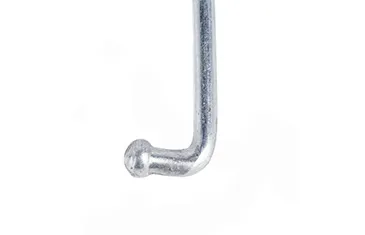-
 Phone:
Phone: -
 Email:
Email:

Durable Wire Mesh Baskets for Outdoor Landscaping and Erosion Control Solutions
The Versatility of Gabion Wire Baskets
Gabion wire baskets, originally designed for civil engineering applications, have found an expansive role in landscaping, architecture, and environmental protection. These cages, typically made of high-quality welded or woven steel wire, are filled with natural stones or granular material to create a sturdy structure. Their unique design and functionality have led to their popularity across various sectors, making them an essential element in modern construction and design.
Construction and Design
Gabion baskets are constructed from durable materials to ensure longevity and resistance to corrosion. The wire used in gabions is often treated with a protective coating, such as PVC or galvanization, typically extending their lifespan and maintaining their appearance even in harsh environments. Available in various sizes, shapes, and configurations, gabion baskets can be customized to suit specific projects. This versatility allows them to be used for anything from retaining walls to decorative garden features.
Applications in Civil Engineering
In civil engineering, gabion wire baskets serve numerous practical functions. They are commonly used for erosion control, acting as barriers that help to stabilize soil and prevent landslides. When filled with rocks, these baskets create a permeable structure that manages water flow, reduces runoff, and enhances natural drainage. Gabions are also employed in constructing retaining walls, both for their structural integrity and their ability to blend harmoniously into the landscape.
Landscaping and Aesthetics
gabion wire baskets

Beyond their functional uses, gabion wire baskets have become popular in landscaping due to their aesthetic appeal. Designers utilize them to create visually striking features in gardens and public spaces. For instance, they can be used as decorative walls, planters, or benches, integrating natural stones into the design to create a rustic, organic feel. By filling the baskets with different types of stones, homeowners and landscape architects can achieve a variety of textures and colors, elevating the overall look of the space.
Environmental Benefits
Gabion wire baskets also exhibit several environmental advantages. Their use in erosion control helps maintain the integrity of landscapes and waterways, promoting biodiversity by creating habitats for small wildlife. Additionally, the materials used in gabions are often sourced locally, reducing the carbon footprint associated with transportation. Moreover, they can be designed to blend with the environment, often using natural materials that complement the surrounding ecosystem.
Cost-Effectiveness
One of the notable benefits of gabion wire baskets is their cost-effectiveness. Compared to traditional construction materials, gabions require less labor and are easier to assemble. The availability of local stone reduces transportation costs, while their durable design means reduced maintenance expenses over time. This affordability makes them an attractive option for both commercial and residential projects.
Conclusion
In summary, gabion wire baskets present a unique combination of functionality and aesthetic appeal, making them an invaluable option in numerous applications, from engineering to landscaping. Their capacity to prevent erosion, enhance drainage, and provide sustainable design solutions underscores their importance in contemporary construction practices. Whether as a practical engineering tool or an eye-catching design element, gabion wire baskets will continue to play a vital role in shaping our environments and protecting our landscapes. Their adaptability and efficiency ensure that they remain a popular choice for both professionals and DIY enthusiasts alike, contributing to a sustainable future in design and development.
-
Wire Mesh for Every Need: A Practical SolutionNewsJul.25,2025
-
Steel Fences: Durable, Secure, and Stylish OptionsNewsJul.25,2025
-
Roll Top Fencing: A Smart Solution for Safety and SecurityNewsJul.25,2025
-
Cattle Farm Fencing Solutions for Maximum SecurityNewsJul.25,2025
-
Affordable Iron Binding Wire SolutionsNewsJul.25,2025
-
Affordable Galvanized Wire SolutionsNewsJul.25,2025
-
Wire Hanger Recycling IdeasNewsJul.25,2025








